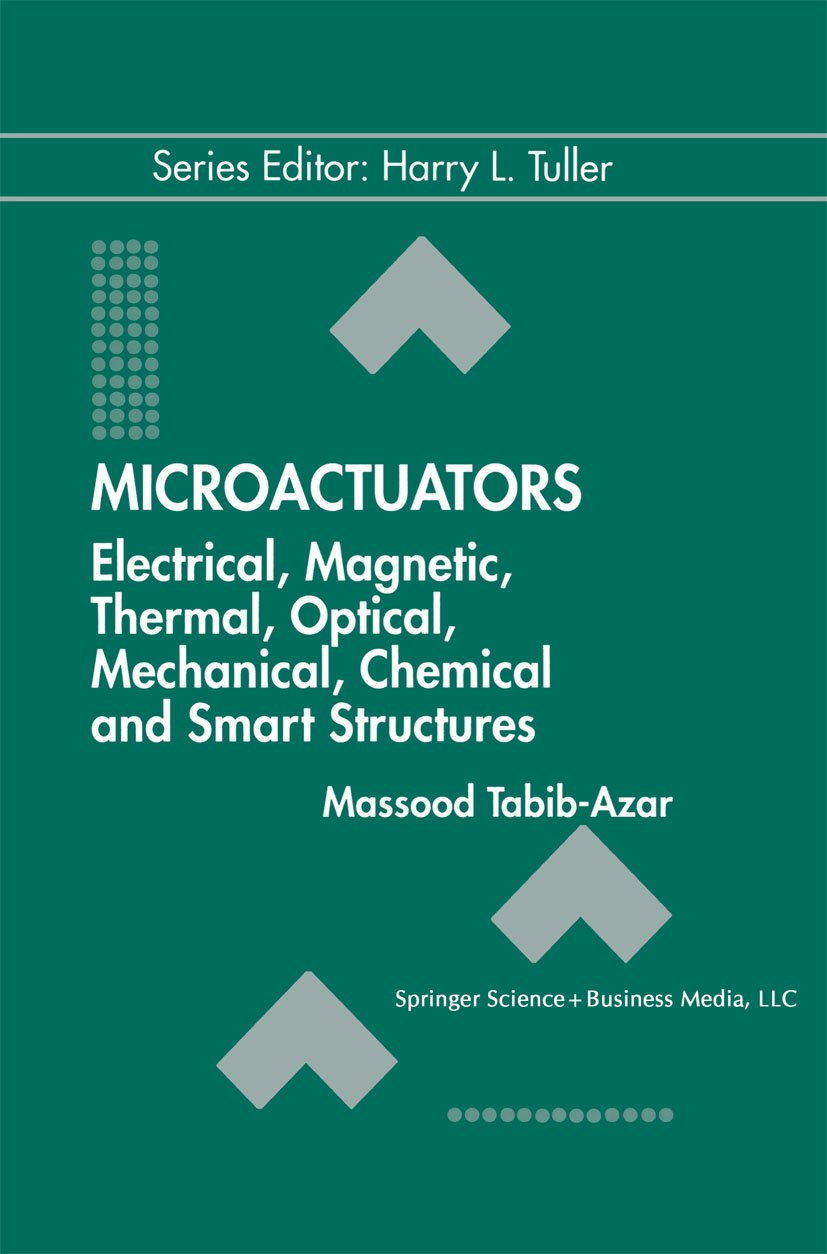Microactuators
219 8. 2 Sensors 221 8. 3 Physical Sensors 222 8. 3. 1 Electrical Sensing Means 223 8. 3. 2 Magnetic Field Methods 231 8. 3. 3 Optical Methods 232 8. 4 Chemical Sensors 241 8. 4. 1 Electrical Gas and Chemical Sensors 243 8. 4. 2 Guided-Optics Intrins...
Read more
219 8. 2 Sensors 221 8. 3 Physical Sensors 222 8. 3. 1 Electrical Sensing Means 223 8. 3. 2 Magnetic Field Methods 231 8. 3. 3 Optical Methods 232 8. 4 Chemical Sensors 241 8. 4. 1 Electrical Gas and Chemical Sensors 243 8. 4. 2 Guided-Optics Intrinsic Chemical Sensors 246 8. 4. 3 Extrinsic Chemical Sensors 250 8. 4. 4 Polymer Waveguide Chemical Sensors 251 8. 4. 5 Surface Plasmon Chemical Sensors 252 8. 4. 6 Indicator-Mediated Extrinsic Sensing 253 8. 4. 7 Optical Biosensors 256 8. 4. 8 Ultrasonic Gas and Chemical Sensors 257 8. 4. 9 Intelligent Sensors 258 8. 5 Connections/Links and Wiring 258 8. 5. 1 Optical Links 260 8. 5. 2 Requirement on the Processing Unit/Intelligence 262 8. 6 Actuators 263 8. 7 Signal Processing/Computing 264 8. 7. 1 Implicit Computation 266 8. 7. 2 Explicit Computation 267 8. 8 References 274 Subject Index 279 Micro-Actuators (Electrical, Magnetic, Thermal, Optical, Mechanical, and Chemical) It has become quite apparent that sensors and actuators are the main bottleneck of the modem information processing and control systems. Microprocessors and computers used to be the main limiting element in most information processing systems. But thanks to the enonnous progress in the microelectronics industry, most information analysis tasks can be processed in real time. The data has to be acquired by the processor in some form and processed and used to produce some useful function in the real world.
Less



